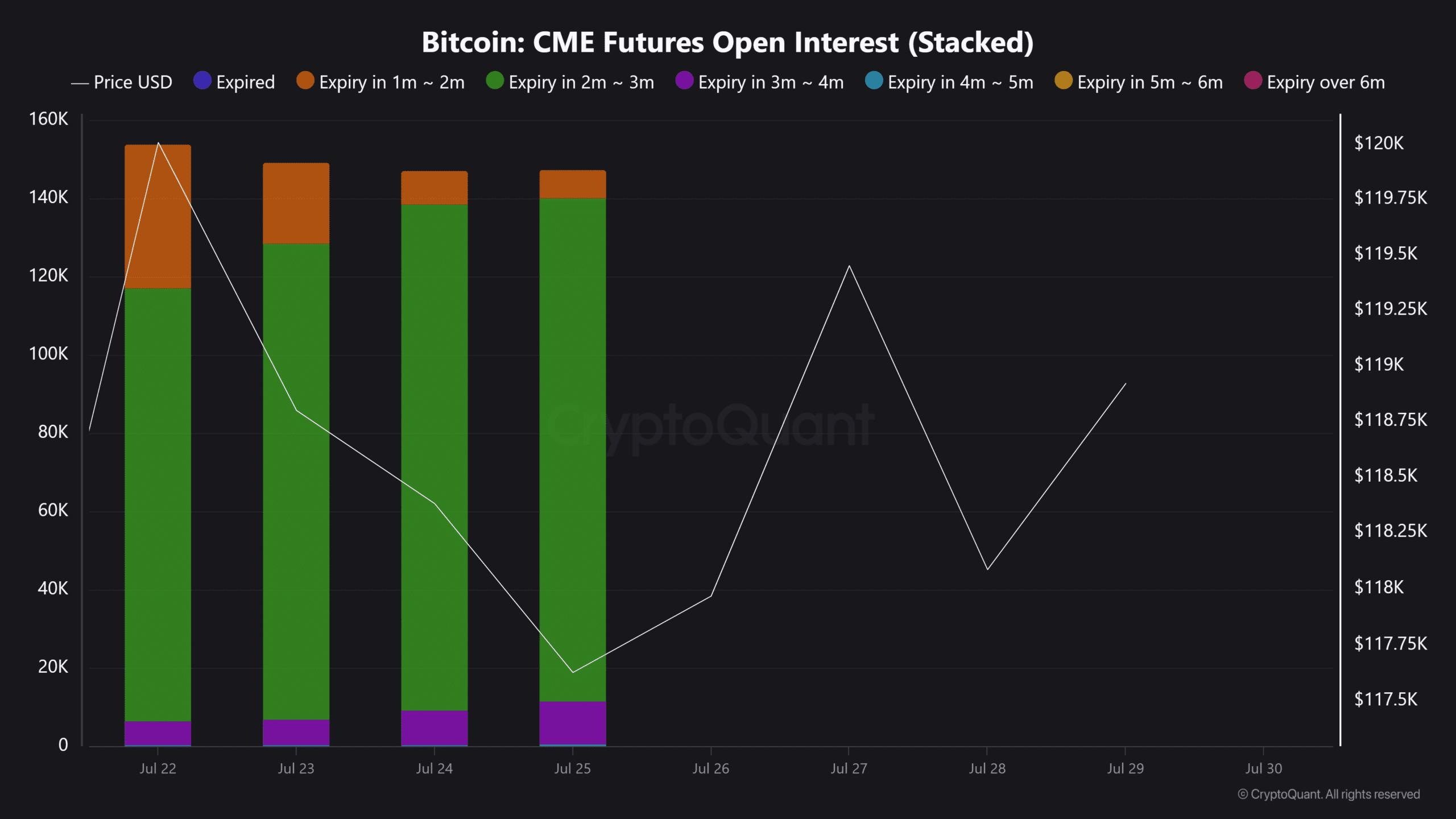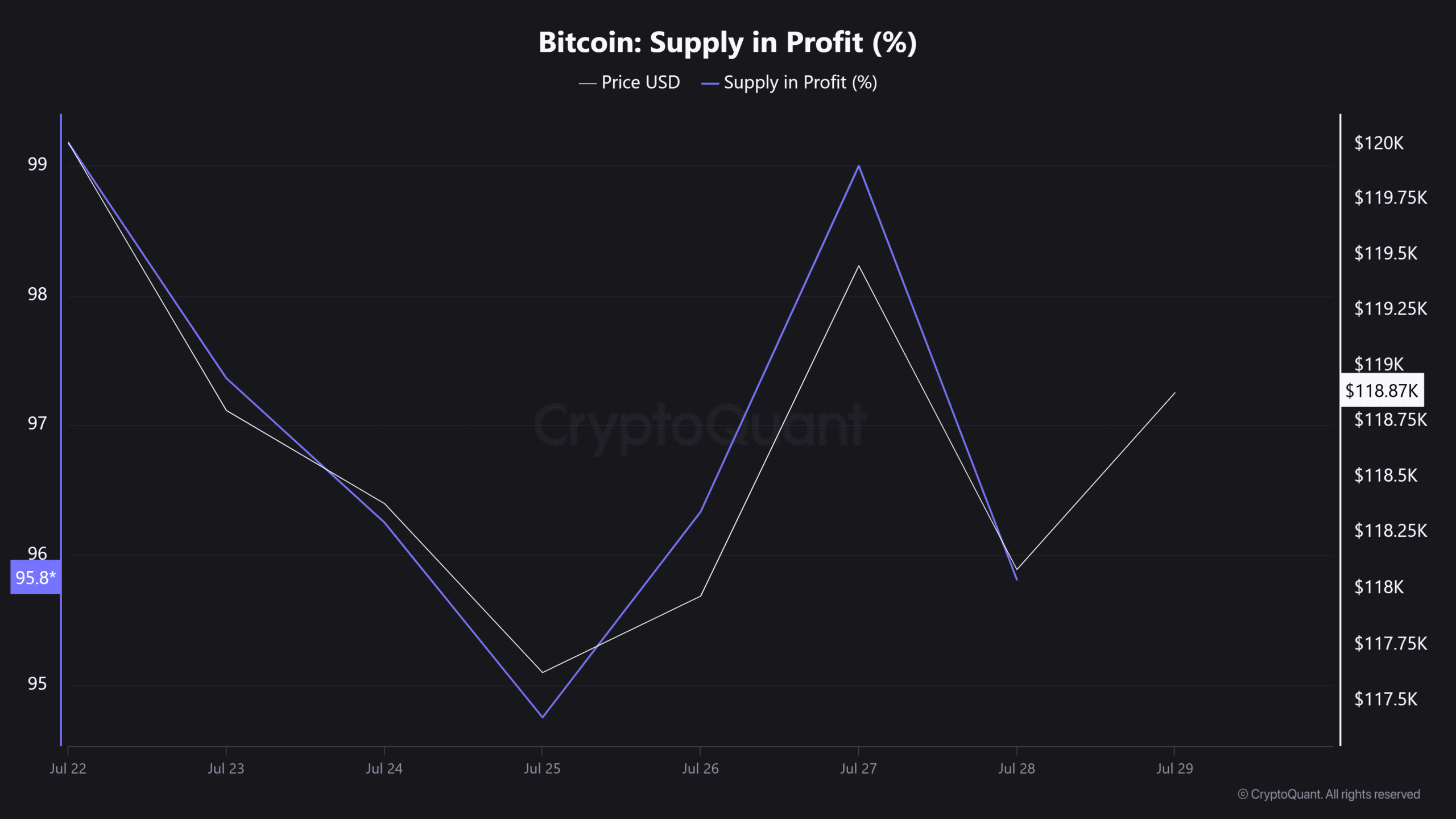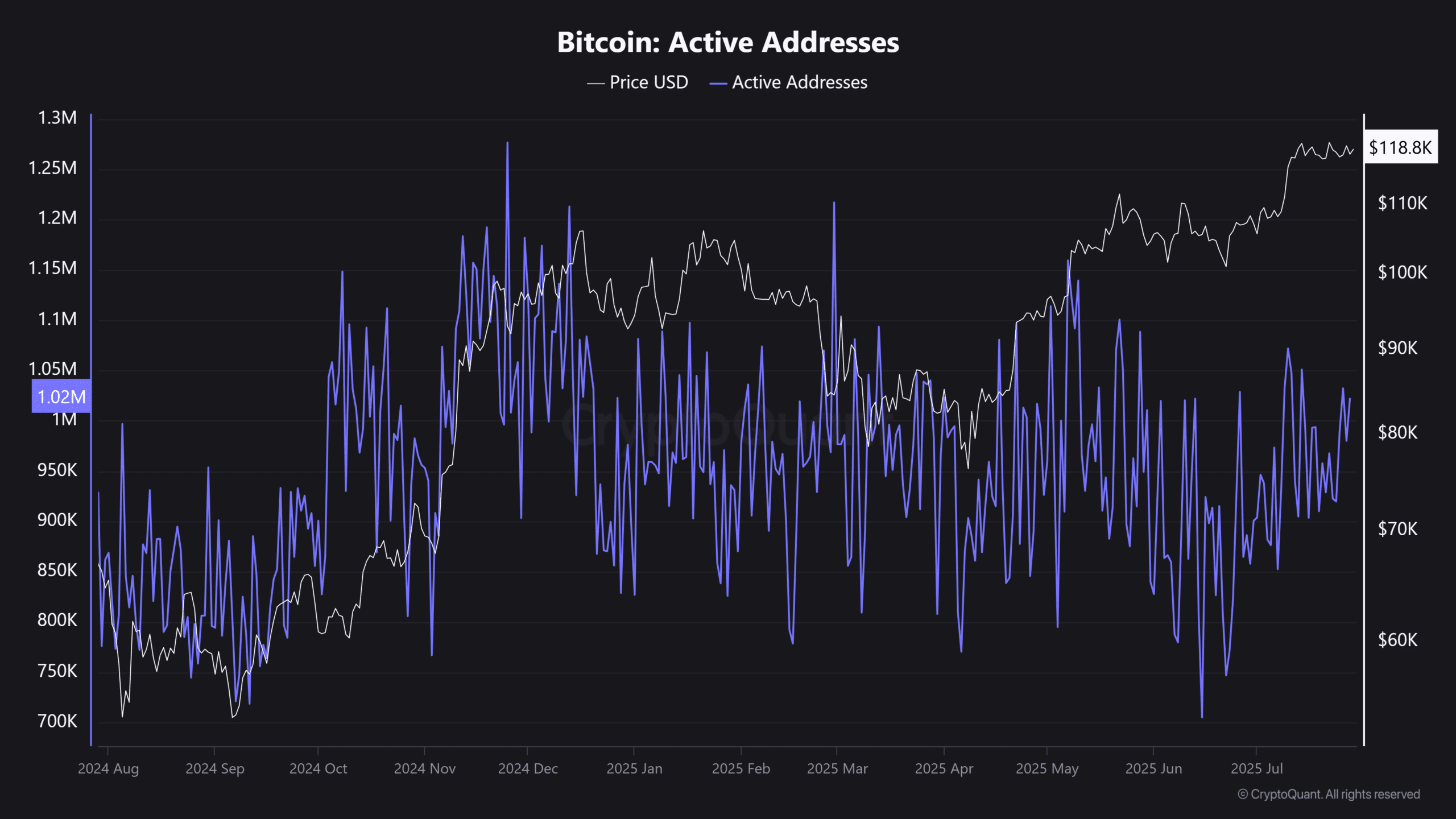Bitcoin [BTC] has had a lackluster performance this week, but not without noteworthy signals.
According to a recent report from Glassnode, BTC ETF inflows have dropped an astonishing 80% compared to the previous week, marking the largest decline in months.
For a market primarily driven by institutional enthusiasm, this pullback is hard to ignore.
 Continued popularity of derivatives
Continued popularity of derivatives
However, despite this, the derivatives market remains hot. According to CryptoQuant data, the number of open contracts for CME futures remains high.
This indicates that even if ETF inflows slow down, traders (especially short-term speculators) still expect gold prices to rise further.
 Profit levels remain high, but risks are increasing.
Profit levels remain high, but risks are increasing.
Further, on-chain data shows that 95.8% of BTC supply is still in profit. This is a strong signal of BTC's long-term strength, but it also serves as a warning.
When almost all holders are in profit, the risk of profit-taking increases, especially in cases where momentum stagnates.
This may in turn trigger panic among short-term holders, potentially leading to a short-term correction in BTC price charts.
 Another soft indicator, 'active addresses', exacerbates this possibility.
Another soft indicator, 'active addresses', exacerbates this possibility.
Weekly trading volume has pulled back from its early July highs, suggesting that large holders are hesitating, with neither panic selling nor aggressive buying. This is a 'wait-and-see' calm period.
 What do mixed market signals mean for Bitcoin?
What do mixed market signals mean for Bitcoin?
Bitcoin investors and traders seem to understand this: BTC is in a hesitating phase. Institutional buyers are taking a breather, on-chain activity is weakening, but traders are not yet ready to give up.
Since almost all cryptocurrencies are still in profit, any further weakness could trigger a wave of selling pressure. The next movement may depend on whether new demand—whether from retail or institutional—will come in soon.
Otherwise, BTC may face a short-term correction before the next rebound.
